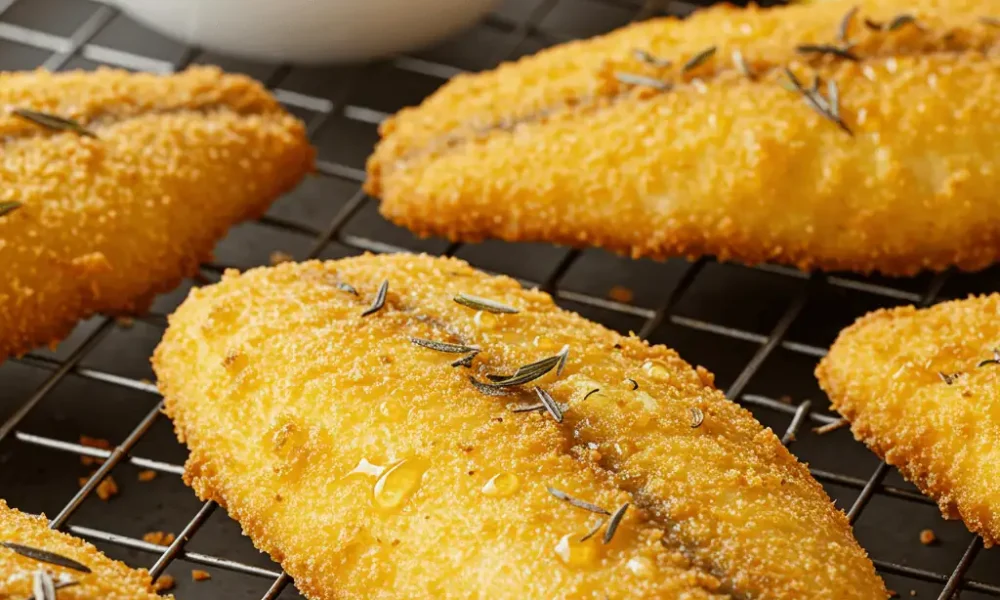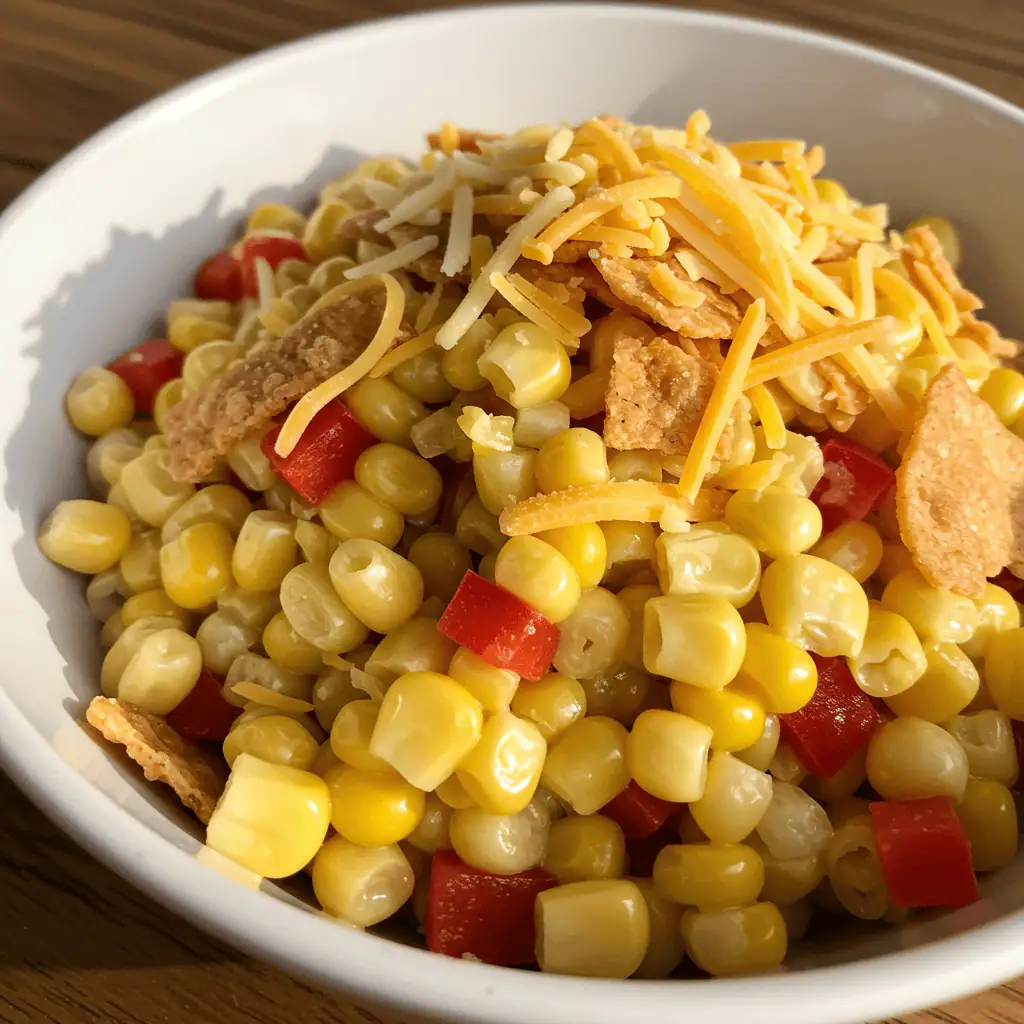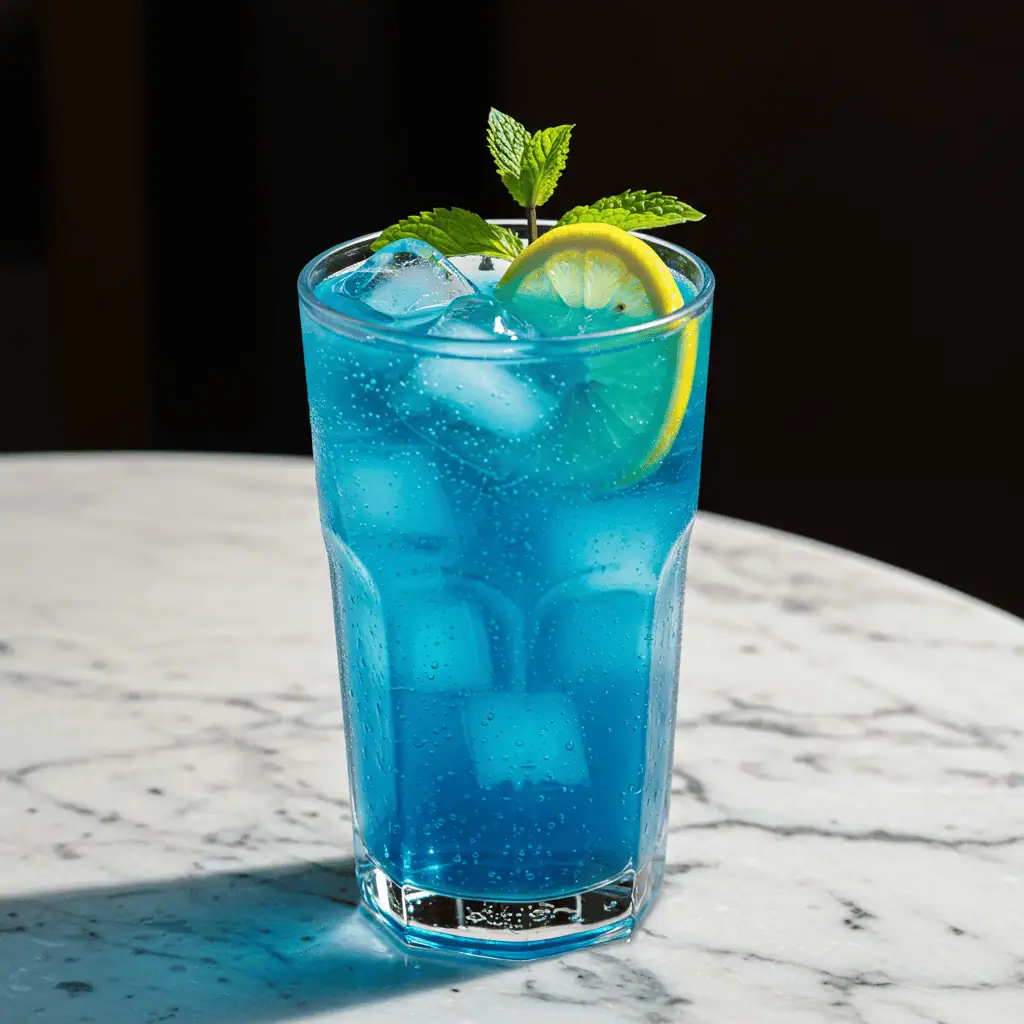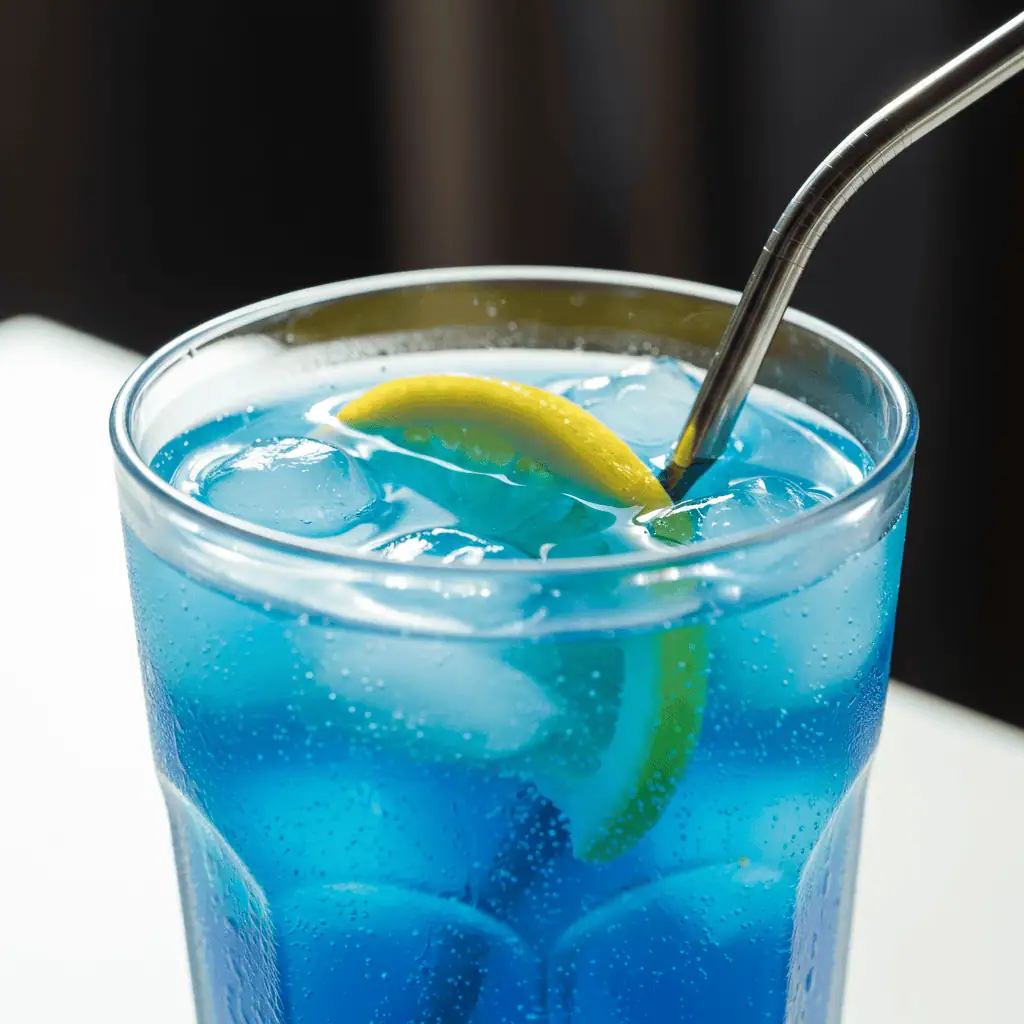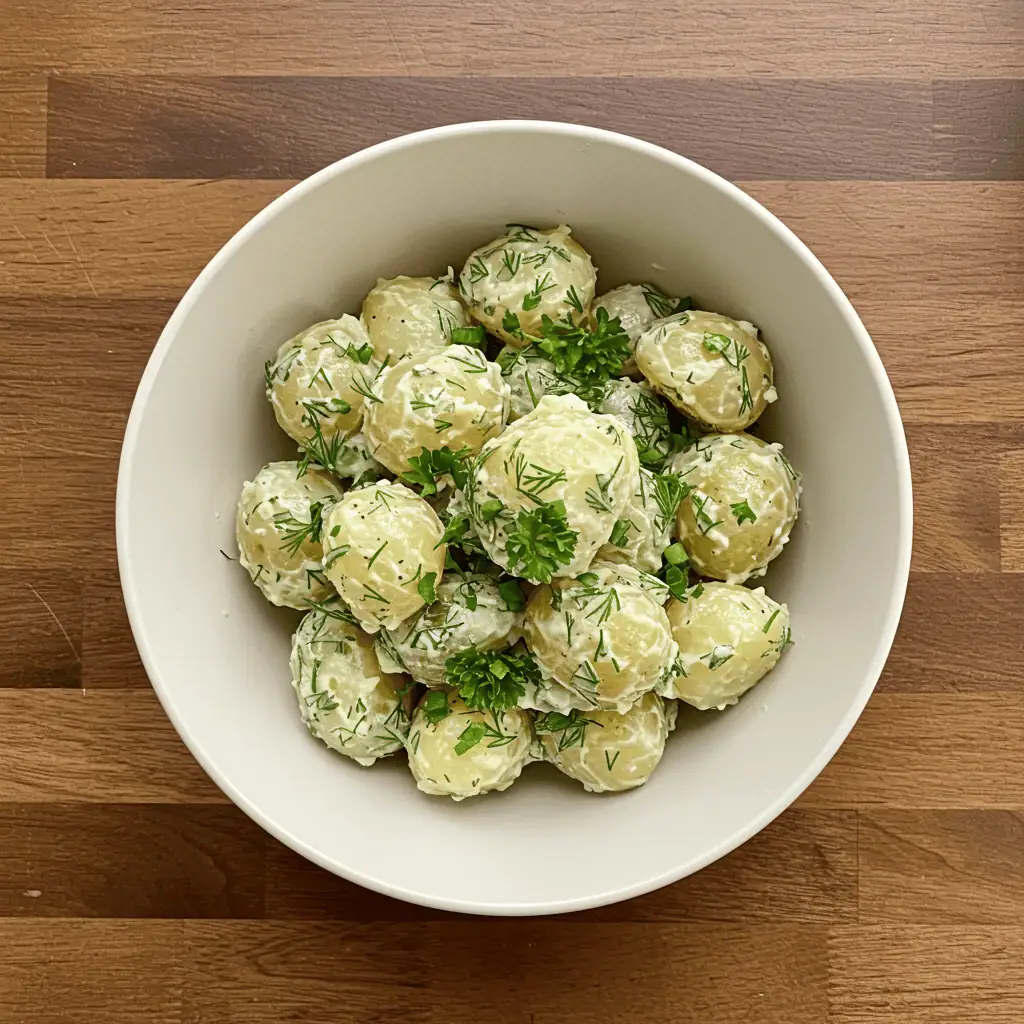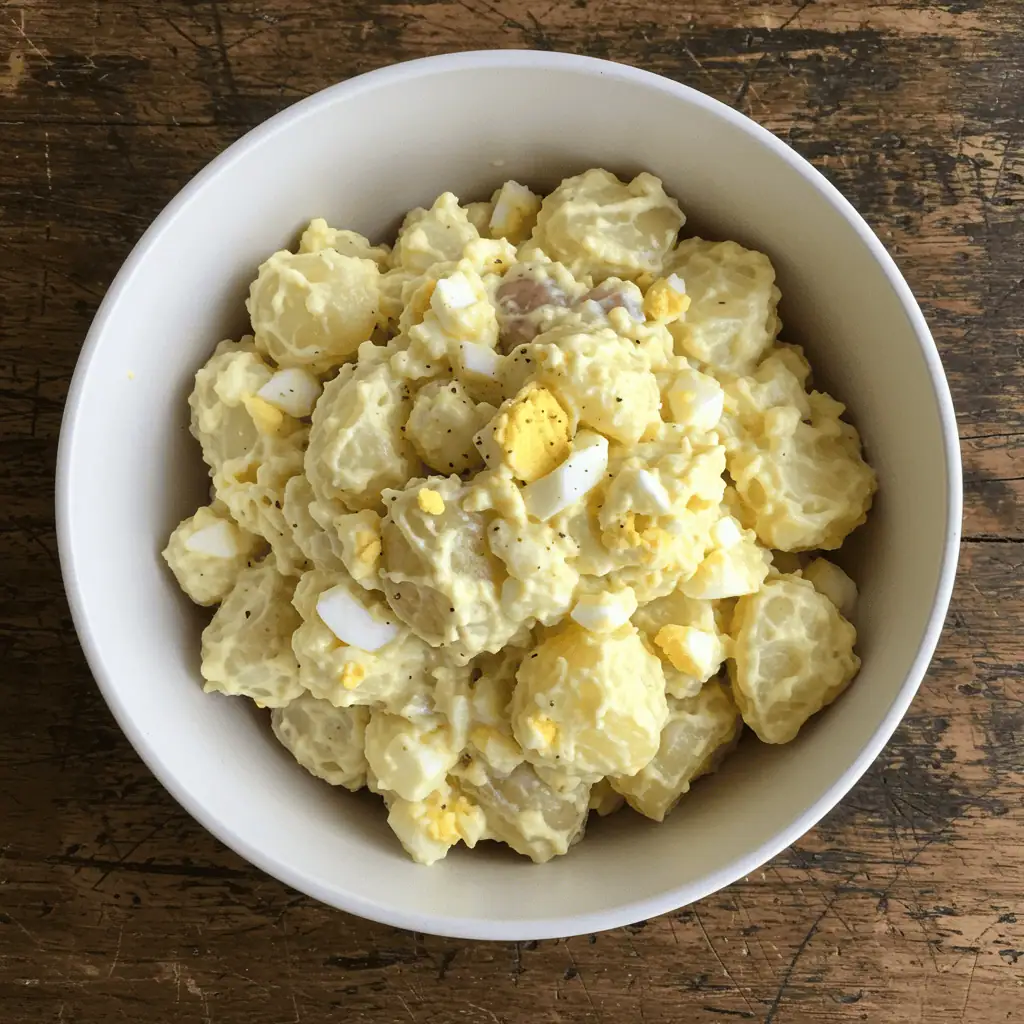Crispy Fish Fillets – Ultimate Guide to Perfect Golden Crunch
When you hear the sizzle of a fillet hitting hot oil and smell the warm, savory aroma of seafood frying to perfection, you know something good’s about to hit your plate. Crispy fish fillets are the kind of meal that never goes out of style—flaky on the inside, golden on the outside, and deeply satisfying. But let’s be real: nailing that crunch isn’t always easy. Whether you’re frying in oil, baking, or air frying, getting the texture right without drying out the fish takes more than luck.
In this in-depth guide, we’ll explore everything from choosing the right fish to unlocking the secrets of perfect breading. You’ll learn why drying your fish is essential, how to keep it crispy even after cooking, and whether to flour before frying (spoiler: it matters). We’ve also included pro tips, healthy alternatives, mouth-watering pairings, and answers to the most asked questions from home cooks everywhere.
Don’t miss our grilled salmon ideas with avocado salsa if you’re seeking heart-healthy options after indulging in crispy comfort.
Introduction to Crispy Fish Fillets
Why Crispy Fish Fillets Are a Classic Favorite
Crispy fish fillets have a special place on dinner tables across the world. Whether it’s a simple fish and chips meal or a gourmet seafood platter, the appeal is universal. They’re quick to prepare, high in protein, and pair well with a range of sides and sauces. Plus, you don’t need fancy equipment—just good technique.
Crispy fish fits in anywhere, from casual weeknight dinners to backyard fish fries. Its crunchy texture appeals to both kids and adults, making it one of the most family-friendly meals you can whip up in under 30 minutes. And because it can be made with a variety of fish, there’s something for every taste and budget.
The Appeal of Texture: Crunch Outside, Flaky Inside
Texture makes or breaks a fish fillet. No one wants a soggy crust or a rubbery inside. A perfect crispy fish fillet delivers contrast: a loud, golden crunch on the outside, followed by juicy, flaky white fish within.
The magic is in the technique. From using dry coatings like flour and cornmeal to maintaining the right oil temperature, achieving this contrast is easier than it sounds—when you know what to do.
Discover great ideas like our Bar Harbor New England Clam Chowder if you’re a seafood lover chasing more rich and comforting textures.
Choosing the Best Fish for Crispy Fillets
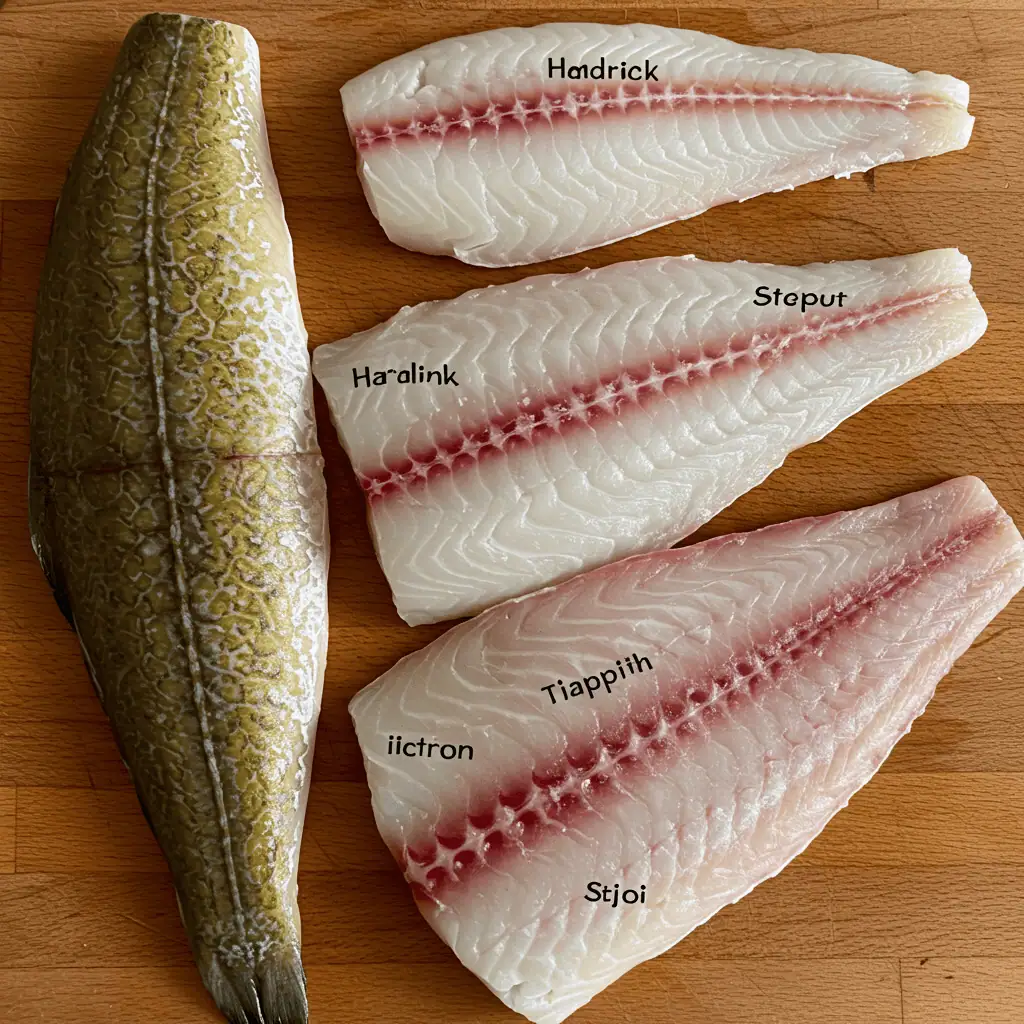
Top Fish Varieties for Frying: Cod, Haddock, Tilapia & More
Not all fish are created equal—especially when your goal is that irresistible crunch. For the best crispy fish fillets, lean, firm, white fish is your best bet. These varieties hold up well during frying and deliver that signature flake inside without falling apart.
Here are the top choices:
| Fish Type | Texture | Flavor Profile | Best Cooking Method |
|---|---|---|---|
| Cod | Firm, flaky | Mild and clean | Deep-frying, batter |
| Haddock | Firm, delicate | Slightly sweet | Beer-battered, pan-fried |
| Tilapia | Medium-firm | Mild, earthy | Panko-breaded, air-fried |
| Catfish | Tender | Rich and muddy (US South-style) | Cornmeal crust |
| Pollock | Medium-firm | Clean and light | Battered or breaded |
| Halibut | Very firm | Mild and meaty | Pan-seared or fried |
These fish are popular because they cook quickly, flake well, and soak up seasonings without overpowering sauces or breadings.
Looking for inspiration? Try our healthy pasta salad with tuna for a lighter seafood option that still packs great flavor.
Fresh or Frozen? What Works Best for Crispy Results
While fresh fish is often preferred for its flavor and texture, high-quality frozen fish fillets can produce equally crispy results—if handled properly. The trick lies in thorough thawing and drying. Moisture is the enemy of crispiness. Even the best breading will fail if the fillet is wet when it hits the oil.
Here’s how to get frozen fish fillets ready for a crispy finish:
- Thaw in the fridge overnight (never in water).
- Pat dry thoroughly with paper towels—don’t skip this step.
- Let sit at room temp for 15 minutes before cooking to avoid uneven frying.
Bonus Tip: Wild-caught fish tends to have a better texture and less water retention compared to farmed ones, making them ideal for frying.
Don’t miss our guide on how to cook kofta kebabs in an air fryer—you can apply similar crisping techniques to fish fillets using minimal oil.
Preparing Fish for Frying
Trimming, Cleaning, and Patting Dry: The Essential Prepping Steps
Preparation is where crispy fish fillets begin their journey to golden perfection. Even if you’ve picked the best fish in the market, skipping proper prep will ruin the final result. Start by checking for bones and trimming any ragged edges that could burn during frying.
Here’s your step-by-step prep routine:
- Rinse the fish under cold water briefly to remove any surface debris.
- Pat dry with paper towels—this is crucial. Wet fish = soggy crust.
- Trim thin tails or uneven pieces to ensure even cooking.
- Optional: Lightly score the skin side (for skin-on fillets) to prevent curling.
Moisture is the enemy of crispiness. Even a little dampness can interfere with adhesion of the coating and steam the fish instead of letting it fry.
You’ll want to place the prepped fish on a wire rack or a tray lined with paper towels while preparing your coating or batter. This helps pull out any last bit of surface moisture.
Check out our kosher and halal food guide if you’re planning to align your fish meals with specific dietary needs.
Marinating Tips for Extra Flavor Without Sogginess
Marinating fish before frying can add tremendous flavor, but it must be done with a light hand. Too much moisture or acidic ingredients can actually break down the fish’s texture and make it mushy.
Here are some simple, safe marinating ideas for crispy fish:
- Dry spice rub: Paprika, garlic powder, lemon pepper, cayenne.
- Light marinade: A mix of lemon juice (very minimal), olive oil, and herbs.
- Buttermilk soak (Southern-style): Tenderizes and adds richness—just be sure to pat dry thoroughly before breading.
Marinating time should never exceed 15–30 minutes, and always refrigerate during the soak.
Pro Tip: After marinating, let the fish come to room temp for 10–15 minutes before frying. Cold fillets lower oil temperature and create greasy, uneven results.
Don’t miss our sweet potato cornbread recipe—a warm, tender side that pairs beautifully with any fried fish dish.
The Secret to Crispy Fish – Breading Techniques
Panko, Cornmeal, and Tempura: Which Coating Wins the Crunch Test
When it comes to crispy fish fillets, the coating makes or breaks the crunch. From light Japanese tempura to thick Southern-style breading, each technique delivers a unique texture. Here’s how the most popular coating styles stack up:
| Coating Type | Texture Result | Best Fish Types | Notes |
|---|---|---|---|
| Panko (Japanese breadcrumbs) | Ultra-light and crispy | Tilapia, cod, haddock | Best for air frying or baking |
| Cornmeal | Gritty, golden crust | Catfish, pollock | Southern-style, holds well in oil |
| Tempura Batter | Puffy and delicate | Haddock, cod | Needs ice-cold batter and hot oil |
| Flour + Egg + Breadcrumbs | Crunchy and thick | Halibut, salmon | Classic triple-dip method |
| Beer Batter | Thick and rich | Cod, haddock | Crisp but heavier; deep fry only |
Pro Tip: Mix in a bit of cornstarch or rice flour into your coating—both absorb less oil and boost crunch without heaviness.
Each method shines in different ways, and you can even combine coatings (like flour + cornmeal + breadcrumbs) for your own signature crust.
Should You Flour Fish Fillets Before Frying? [PAA Answer]
Absolutely. Flouring the fish first creates a dry base that helps other layers of batter or breading adhere more effectively. It also contributes to that initial crispy texture by absorbing surface moisture and sealing the fillet before any wet ingredient is applied.
Here’s a simple 3-step dry-wet-dry method:
- Dredge in seasoned flour (with salt, pepper, paprika, etc.).
- Dip in egg wash or buttermilk.
- Coat in panko, cornmeal, or seasoned breadcrumbs.
This process locks in the moisture of the fish while building layers of texture outside.
Looking for more seafood comfort? Don’t miss our rich and hearty Bar Harbor clam chowder—a great companion to any fried fish meal.
Frying Methods That Make Fish Fillets Crispy
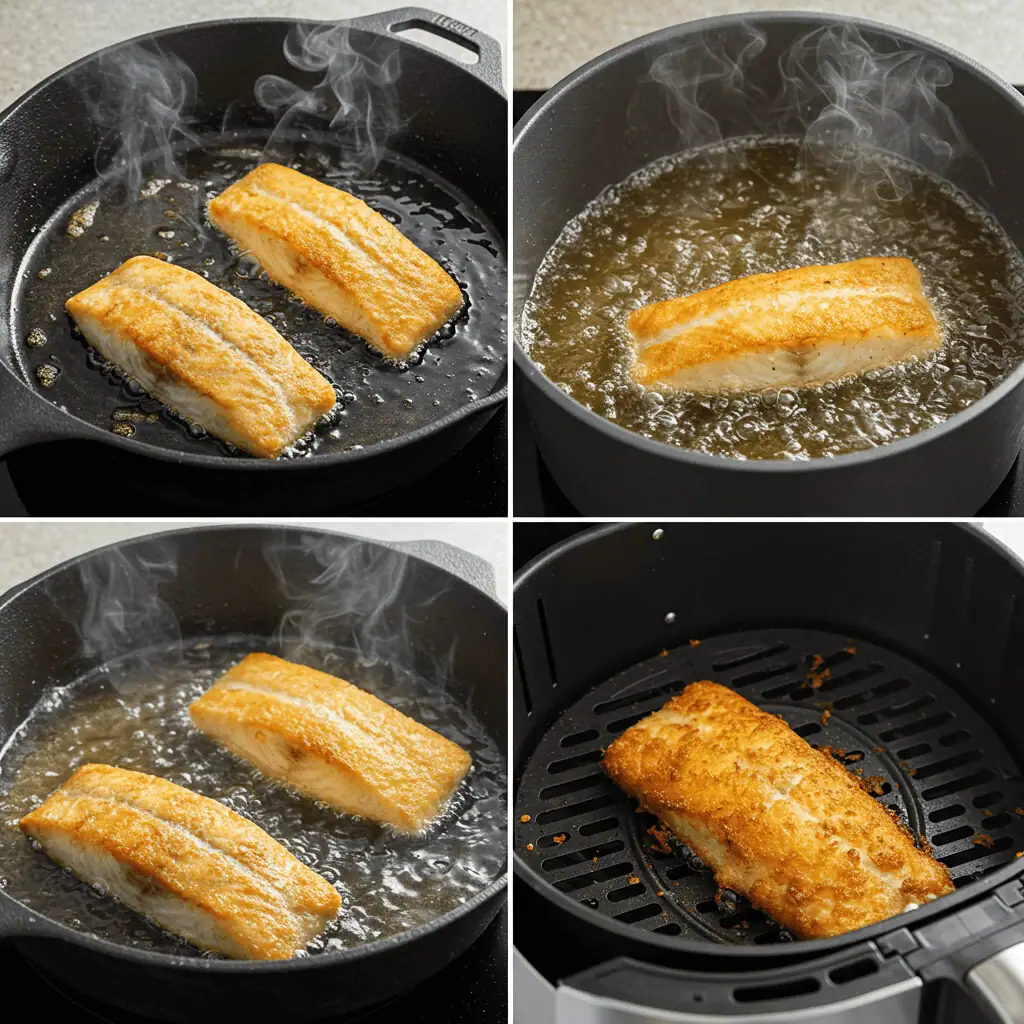
Pan-Frying vs Deep-Frying vs Air Frying: Pros and Cons
How you cook your fish fillets plays a huge role in their final crunch level. Let’s break down the most popular frying methods and how each affects crispiness, taste, and health:
| Method | Crispiness Level | Oil Use | Best For | Downside |
|---|---|---|---|---|
| Pan-Frying | Medium-High | 2–4 tablespoons | Thin fillets, flaky fish | Uneven browning if heat isn’t managed |
| Deep-Frying | Maximum Crunch | Fully submerged | Thick fillets, battered fish | High oil usage and calorie count |
| Air Frying | Light Crunch | Minimal/no oil | Panko-coated, thin fillets | Less browning without spray oil |
Pan-frying offers control and a crisp exterior with less oil, ideal for those who like stovetop cooking. Deep-frying gives you that restaurant-style crunch and golden color, especially if you’re using beer batter or tempura. Meanwhile, air frying is great for health-conscious cooks wanting a crispy bite without the grease.
Whichever you choose, managing heat is essential. Inconsistent temperature = soggy or overcooked fish.
Oil Temperature and Timing for Golden Perfection
Oil that’s too cold will soak into the coating, making it greasy. Oil that’s too hot burns the crust before the inside is cooked. You need to keep oil between 350°F and 375°F (175°C to 190°C) for optimal results.
How to monitor oil temp without a thermometer:
- Dip the end of a wooden spoon into the oil. If small bubbles rise steadily, you’re in the zone.
- Drop a bit of flour into the oil—if it sizzles immediately but doesn’t brown in seconds, it’s ready.
Here’s a general cooking time guide by method:
| Fish Type | Pan-Fry Time | Deep-Fry Time | Air Fry Time |
|---|---|---|---|
| Thin Tilapia | 2–3 min/side | 3–4 min total | 10–12 min |
| Thick Cod | 4–5 min/side | 5–6 min total | 14–15 min |
| Catfish | 3–4 min/side | 5 min total | 12–14 min |
Important: Don’t overcrowd the pan or fryer. It drops the oil temp fast and ruins the texture. Cook in small batches for best results.
Don’t miss our quick guide on how to cook kofta kebabs in an air fryer—many of those air fryer techniques can help with breaded fish fillets too.
How to Keep Fried Fish Fillets Crispy After Cooking
Answering: How to keep fried fish fillet crispy?
The Role of Resting Racks, Paper Towels, and Ovens
Getting the fish crispy is only half the battle. The other half? Keeping it that way until it hits the plate.
The biggest mistake people make is draining fried fish on paper towels. While this seems logical, paper traps steam, which rises right back into your crust and makes it soggy in minutes.
Here’s what to do instead:
- Use a wire cooling rack set over a baking sheet. This allows air to circulate around the fillet, keeping the bottom from getting wet.
- Keep your oven on warm (about 200°F). Place the cooked fillets on the rack in the oven to hold until serving.
- Leave space between fillets. Piling or stacking fish causes trapped steam—your worst enemy when it comes to maintaining crunch.
Pro Tip: If you must reheat fried fish, avoid the microwave. Use an air fryer or oven at 375°F for 5–8 minutes to restore crispiness.
Avoiding Steam and Moisture – The Biggest Enemies of Crunch
Even after frying, moisture can creep in and ruin your fish. Here’s how to stay ahead of it:
- Keep hands dry when handling fish post-frying.
- Serve immediately if not using an oven warmer.
- Don’t cover with foil—this traps moisture.
Also, avoid sauces directly on top of the fish. Instead, serve dips and dressings on the side to preserve that beautiful golden crust.
Looking for lighter fare to go with your crispy fish? Discover great ideas like our healthy pasta salad with tuna for a well-balanced plate.
How Do You Crisp Fish Fillets in the First Place?
Answering: How do you crisp fish fillets?
Tips from Pro Chefs: Dry Brines, Double Dips, and High Heat Tricks
Getting that signature crispy texture isn’t guesswork—it’s science plus a few chef secrets. Here’s how the pros do it:
- Start Dry: Pat your fish completely dry before anything else. Use multiple paper towels if needed.
- Dry Brine the Fillets: Sprinkle lightly with salt and let sit in the fridge (uncovered) for 15–30 minutes. This draws out surface moisture and firms up the flesh.
- Double-Dip Breading: For extra crunch, coat the fish twice. Dip in flour, then egg wash, then breadcrumbs—then repeat the egg and breadcrumb step.
- Use High-Heat Cooking Oil: Go for oils with high smoke points like canola, peanut, or avocado oil. Maintain oil at 350–375°F throughout frying.
- Cold Batter, Hot Oil: If using a batter, chill it before use. Cold batter in hot oil expands and crisps up fast.
Bonus Technique: Add a pinch of baking powder to flour coatings. It introduces tiny air bubbles during frying, giving a lighter, crispier finish.
Common Mistakes That Ruin Crispiness and How to Avoid Them
You can follow the right process and still end up with soggy fish if you don’t dodge these common pitfalls:
- Mistake #1: Wet Fish – Always dry thoroughly, especially after marinating or thawing.
- Mistake #2: Low Oil Temperature – Use a thermometer if you’re unsure. Cold oil equals greasy fish.
- Mistake #3: Overcrowding the Pan – Too much fish lowers the oil temp and causes uneven cooking.
- Mistake #4: Resting on Paper Towels – Use a wire rack instead.
- Mistake #5: Covering Fish After Frying – Steam buildup = sogginess.
Don’t miss our guide on how to cook kofta kebabs in an air fryer for more on cooking proteins with the right temperature and airflow.
Serving and Pairing Ideas for Crispy Fish Fillets
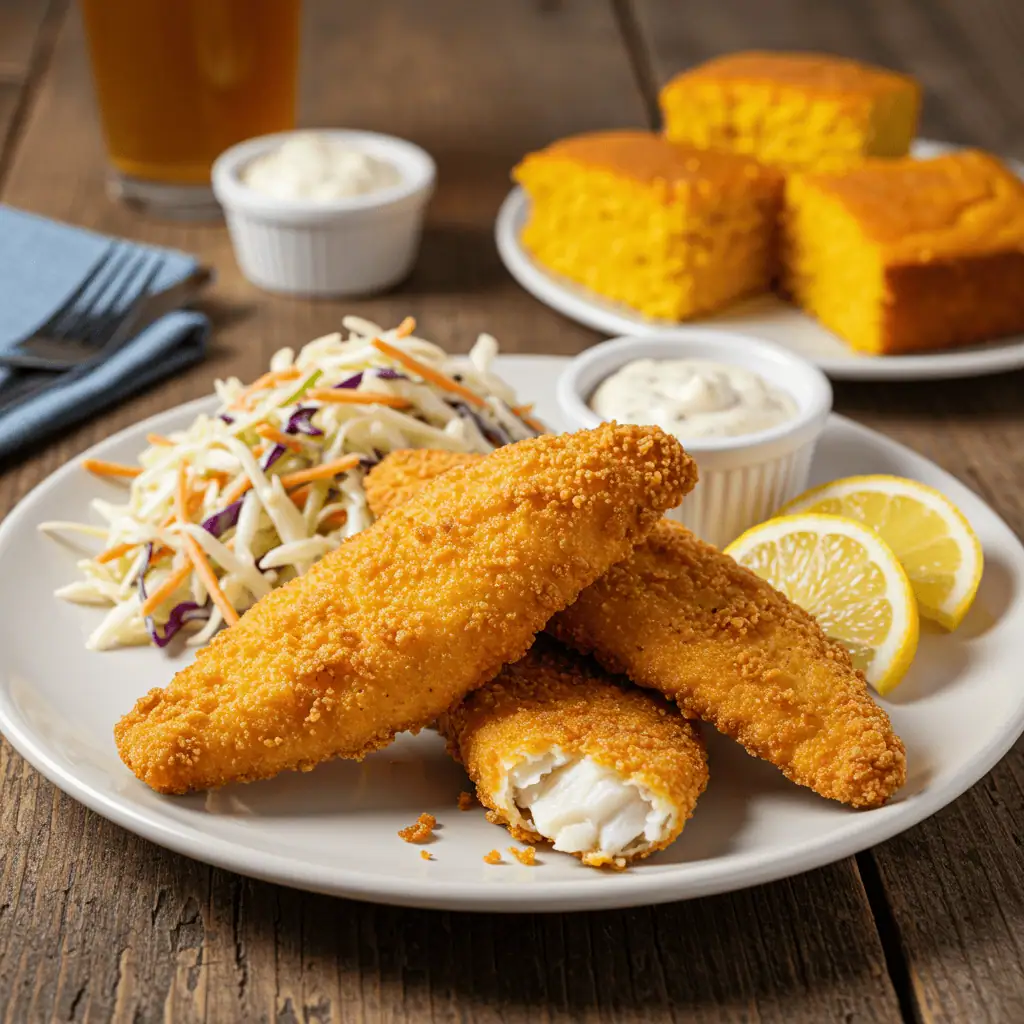
Classic Sides: Fries, Slaws, Cornbread, and Lemon Wedges
Crispy fish fillets might steal the spotlight, but the supporting cast makes the meal. A well-chosen side dish enhances the texture, flavor, and balance of your plate. Here are some go-to pairing options that elevate your crispy fish dinner:
| Side Dish | Why It Works |
|---|---|
| French Fries (Chips) | The iconic combo—crunch meets crunch |
| Creamy Coleslaw | Adds tang, freshness, and creamy contrast |
| Sweet Potato Cornbread | A sweet-savory balance to fried flavors |
| Steamed Vegetables | Lightens the plate with fiber and color |
| Lemon Wedges | Adds acidity to cut through the richness |
| Tartar Sauce | Creamy and tangy—perfect dip pairing |
For a comforting sidekick, don’t miss our sweet potato cornbread recipe—it’s the perfect starchy partner to crispy fish.
Pro Tip: Want a fun twist? Make crispy fish tacos with shredded cabbage, avocado, and chipotle crema.
Sauces That Complement the Crunch: Tartar, Aioli, Spicy Mayo
A crispy fish fillet on its own is satisfying, but the right sauce? That takes it to another level. These sauces add richness, heat, acidity, or herbaceous flair to enhance your fish without overpowering it.
Top sauces to serve with crispy fish:
- Tartar Sauce – Classic and creamy with pickles and lemon juice.
- Garlic Aioli – Rich and garlicky, perfect for dipping.
- Spicy Mayo – A blend of mayo and sriracha adds bold heat.
- Yogurt Dill Sauce – Light and fresh for healthier fish versions.
- Remoulade – A Cajun favorite with mustard, capers, and herbs.
Serving Tip: Always offer sauces on the side to preserve your fish’s crispy coating.
Looking for inspiration? Try this light and protein-packed healthy tuna pasta salad to round out your seafood spread.
Healthier Alternatives – Crispy Fish Without Deep Frying
Oven-Baked and Air-Fried Versions That Don’t Skimp on Texture
Craving that signature crunch but want to skip the deep-fryer? You absolutely can. With a few smart swaps and the right technique, oven-baked or air-fried fish fillets can be just as crispy as their fried counterparts—with a fraction of the fat.
Oven-Baked Crispy Fish
To make crispy baked fish:
- Use a wire rack on top of a baking sheet. This lifts the fillet so hot air can crisp all sides.
- Brush or spray the fish with oil after breading—don’t skip this step.
- Bake at 425°F (218°C) for about 12–15 minutes, flipping halfway through.
Air-Fried Crispy Fish
Air fryers are perfect for leaner crispy fish:
- Preheat your air fryer to 375°F (190°C).
- Cook breaded fillets in a single layer for 10–12 minutes, flipping halfway.
- Lightly spray both sides of the fillet with oil to enhance browning.
Both methods work great with panko or crushed cornflakes. Skip batters in the air fryer—they won’t crisp the same without oil immersion.
Looking for lighter sides to complement these options? Don’t miss our kosher and halal food guide—perfect for crafting balanced meals with mindful ingredients.
Low-Fat Coating Options Using Almond Flour, Whole Wheat, or Polenta
To take it a step further, swap out traditional breadcrumbs for better-for-you coatings that still bring the crunch:
- Almond flour: Adds healthy fats and a mild nutty flavor.
- Whole wheat breadcrumbs: More fiber, less refined carbs.
- Polenta or corn grits: Naturally gluten-free, golden, and crispy.
- Crushed nuts or seeds: Adds texture and healthy oils.
Pro Tip: Mix in herbs and spices (like smoked paprika, garlic powder, or lemon zest) to boost flavor without added fat or salt.
When combined with baking or air frying, these coatings provide satisfying texture and taste while staying aligned with low-fat or low-carb diets.
FAQs – Crispy Fish Fillets
How do you crisp fish fillets?
To crisp fish fillets, start by patting them dry completely. Coat with seasoned flour or panko, then fry in oil heated to 350–375°F. Let them rest on a wire rack, not paper towels, to keep the crust intact.
What is the secret to crispy fish?
The real secret is keeping the fish dry, using a high-smoke-point oil, and maintaining the right frying temperature. Adding cornstarch or rice flour to the coating boosts crunch, and a resting rack keeps the fillets crispy after frying.
How to keep fried fish fillet crispy?
Avoid covering the fish or placing it on paper towels. Instead, place on a wire rack over a baking sheet in a 200°F oven until ready to serve. This prevents steam buildup and sogginess.
Should you flour fish fillets before frying?
Yes, absolutely. A light dusting of flour dries the surface, helps coatings adhere, and creates a barrier that promotes crispiness once it hits the oil.
Conclusion: Mastering Crispy Fish Fillets at Home
Crispy fish fillets aren’t just for restaurants or takeout—they’re totally achievable at home with the right technique, a few kitchen tools, and a little know-how. From choosing the perfect fish and coating to mastering frying methods and keeping that crunch alive, you now have a complete roadmap.
Whether you go traditional with deep-frying or choose a lighter route with air-frying or oven-baking, the key to success lies in preparation, temperature control, and the right finishing touches.
And if you’re looking to expand your seafood skills or serve up the perfect sides, don’t miss our Bar Harbor clam chowder or grilled salmon recipes for even more delicious ideas.
Print
Crispy Perfection: Our Fish Fillets Will Hook You!
5 Stars 4 Stars 3 Stars 2 Stars 1 Star
No reviews
Golden, flaky, and irresistibly crunchy fish fillets that you can deep-fry, oven-bake, or air fry. This foolproof recipe brings restaurant-quality crispiness to your home kitchen, perfect for weeknight dinners or seafood feasts.
- Total Time: 27
- Yield: 4 1x
Ingredients
4 white fish fillets (cod, tilapia, or haddock)
1 cup all-purpose flour
2 eggs, beaten
1 cup panko breadcrumbs
1 teaspoon garlic powder
1 teaspoon paprika
Salt and pepper to taste
Cooking oil (for frying) or spray oil (for baking/air frying)
Instructions
Dry & Season: Pat fish fillets completely dry with paper towels. Season both sides with salt, pepper, garlic powder, and paprika.
Dredge: Coat each fillet in flour, shaking off excess.
Dip: Dip floured fillets into the beaten eggs until fully coated.
Coat: Press into panko breadcrumbs, covering both sides evenly.
Cook:
Pan-fry in hot oil at 350°F for 3–5 minutes per side until golden.
Bake at 425°F for 15 minutes on a wire rack-lined sheet pan.
Air fry at 375°F for 10–12 minutes, flipping halfway through.
Serve: Let rest on a wire rack to stay crispy. Serve immediately with lemon wedges and tartar sauce.
Notes
Use a wire rack after cooking instead of paper towels to keep the coating crisp.
For extra crunch, double-coat the fillets by repeating the egg and breadcrumb step.
Air frying works best with a light spray of oil to help browning.
Pair with tartar sauce, coleslaw, or lemon wedges for a classic serving experience.
For a gluten-free version, use almond flour and gluten-free breadcrumbs.
- Author: Asmaa Nour
- Prep Time: 15
- Cook Time: 12
- Category: Dinner
- Method: Frying, Baking, Air Frying
- Cuisine: American
Nutrition
- Calories: ~320
- Sugar: 0g
- Sodium: 440mg
- Fat: 14g
- Saturated Fat: 2g
- Unsaturated Fat: 11g
- Trans Fat: 0g
- Carbohydrates: 22g
- Fiber: 1g
- Protein: 28g
- Cholesterol: 65mg

